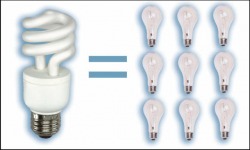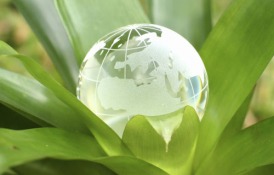Notebook of the GREEN Student
You Can Help Easily
It is easy to help fighting global warming at the individual level.
In fact, if each individual acted responsibly and environmentally-friendly on a daily basis, the efficiency of our battle against climate change would increase considerably.
One individual is powerless. However, if everyone does a little something everyday and adapts his/her daily attitude, the impact of each individual would be considerable.
So yes! you can help by changing your daily habits!
The results will not be visible right away. But in the long-run, you will have a tremendous impact on climate change!
Changing the way we live, work and play will also set the standards for our decision-makers, initiating a State, national and worldwide trend!
In fact, if each individual acted responsibly and environmentally-friendly on a daily basis, the efficiency of our battle against climate change would increase considerably.
One individual is powerless. However, if everyone does a little something everyday and adapts his/her daily attitude, the impact of each individual would be considerable.
So yes! you can help by changing your daily habits!
The results will not be visible right away. But in the long-run, you will have a tremendous impact on climate change!
Changing the way we live, work and play will also set the standards for our decision-makers, initiating a State, national and worldwide trend!
Calculate your carbon emissions footprint!
You may think that you have an environmentally-friendly behavior.
Let's check that out by calculating your carbon emissions footprint!
The results are usually quite disturbing!
[Carbon footprint: the way we use the planet's resources]
You can go to
- the EPA's website: http://www.epa.gov/climatechange/emissions/ind_calculator2.html
- the WWF (WorldWildLife organization)'s website has a simpler calculator that gives you the number of planets that would be necessary to support HUmanity if everyone was acting as you.
The website is made for European inhabitants (so there are questions such as: "how many times a year to you travel out of Europe?) but questions are still general enough for you to use the footprint calculator.
It also gives you personal tips to reduce your carbon footprint.
http://footprint.wwf.org.uk
Let's check that out by calculating your carbon emissions footprint!
The results are usually quite disturbing!
[Carbon footprint: the way we use the planet's resources]
You can go to
- the EPA's website: http://www.epa.gov/climatechange/emissions/ind_calculator2.html
- the WWF (WorldWildLife organization)'s website has a simpler calculator that gives you the number of planets that would be necessary to support HUmanity if everyone was acting as you.
The website is made for European inhabitants (so there are questions such as: "how many times a year to you travel out of Europe?) but questions are still general enough for you to use the footprint calculator.
It also gives you personal tips to reduce your carbon footprint.
http://footprint.wwf.org.uk
TIPS

- Use less. Pull out the plug on appliances when you are not using them (TVs, computers, stereos, DVD players and other devices that use electricity while on standby), chargers for cell phones, PDAs and MP3 players as soon as charging is complete.
- Be efficient with what you use: use energy-efficient light-bulbs!
Replace incandescent lightbulbs with fluorescent ones.
Use lights only when and where you need them - Turn down the thermostat on your water heater, central heating (in the summer, turn it back up).
- Insulate your house to reduce heating and cooling waste.
- Replace old appliances with high-efficiency models.
- Check out plumbing fixtures and install low-flows showerheads and aerators (less hot water --> less energy use)
- Drive less by joining a carpool or use public transportation.
- When driving, have a greener attitude: observe speed limits, avoid rapid accelerations and excessive braking.
- Food: purchase food with less packaging and eat leftovers


